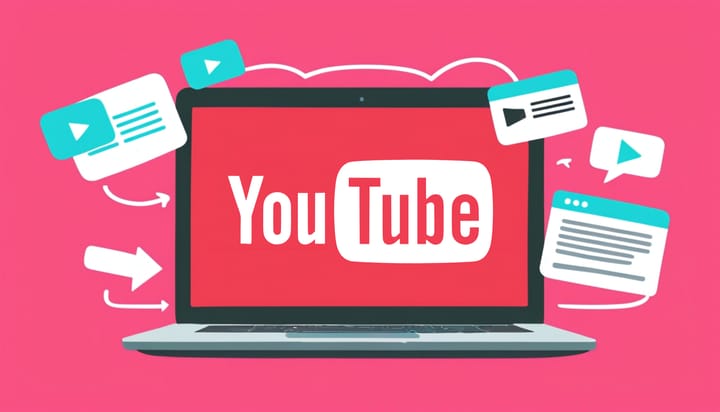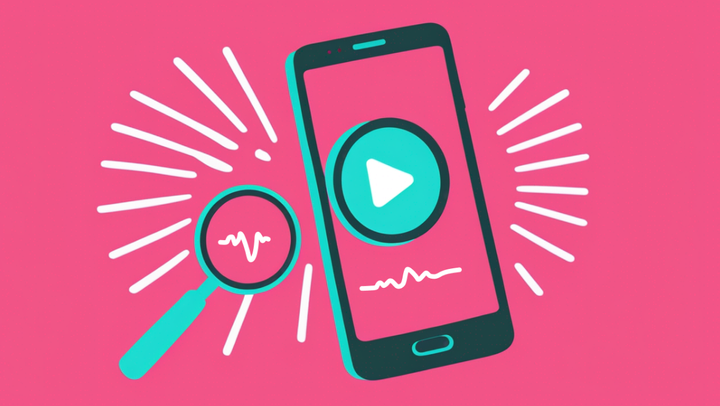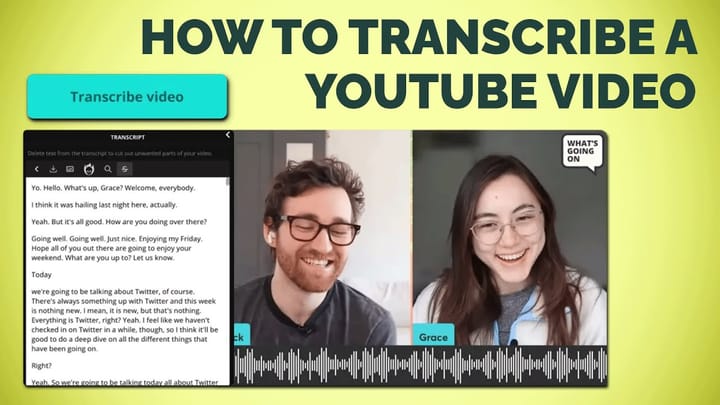How to Make Money on YouTube in 2023 with These 5 Methods
YouTube is still the best channel for earning money from video content. In this article, we cover five ways to make money on YouTube in 2023.
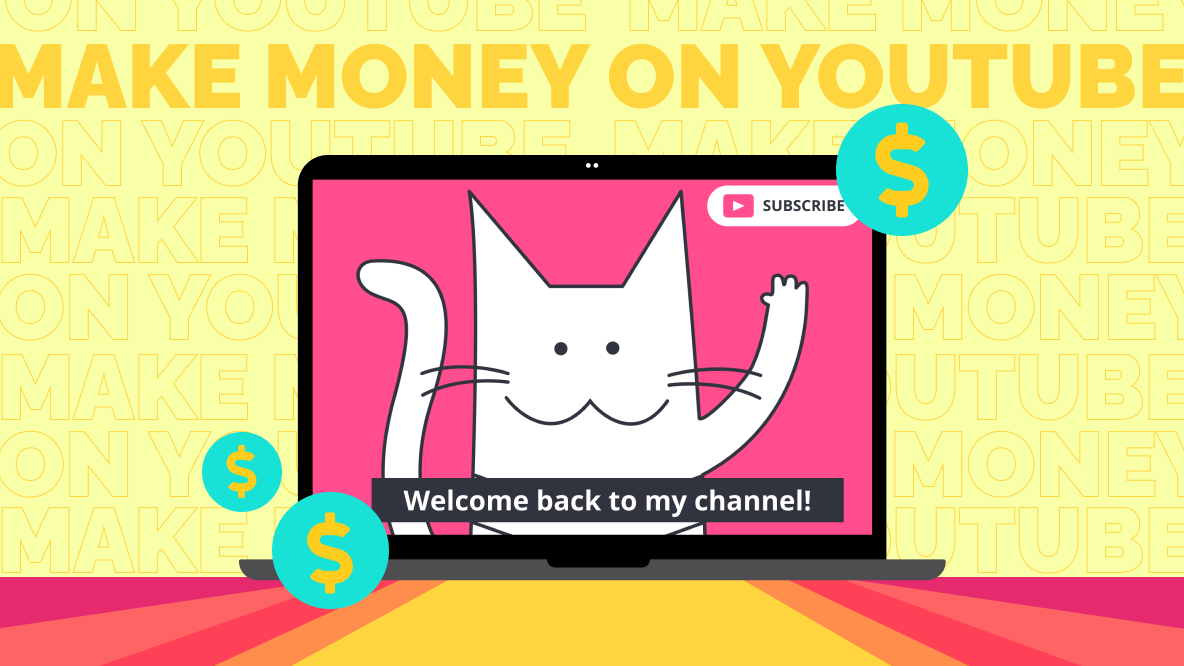
With well over 2 billion active users per month, YouTube is still the destination for long-form video online.
Creators on the platform serve as educators, entertainers, and celebrities in their own right. They’re also entrepreneurs. Making money on YouTube happens by monetizing videos, earning sponsorships, and selling products to viewers. It’s also one of the most lucrative ways to make money from social media content.
Many YouTubers are secretive about exactly how much money they make on the platform, but between Kapwing’s own YouTube channel and insights shared by more transparent creators, we have a good idea of how to make money on YouTube. We’ll even reveal exactly how much you can make.
We’ll go over the basics of how to start earning money on YouTube, how to join the YouTube Partner Program, how ads work on the platform, other methods of earning income, and two case studies.
How to make money on YouTube:
- Qualify for the YouTube Partner Program
- Run ads on your YouTube videos
- Create sponsored videos
- Sell merch to your YouTube fans
- Share affiliate shopping links
- Opt in to channel memberships
That’s the tl;dr of how to make money on YouTube. Keep reading for more in depth info on each aspect.
Related Article: The Best Video Editing Software for YouTubers
How to Join the YouTube Partner Program and Start Making Money
You must join the YouTube Partner Program in order to monetize your YouTube videos by running ads on your content.
There are two ways to qualify for the YouTube Partner Program, whether you make long-form or short-form video content.
- For long-form creators: Have 1,000 subscribers and 4,000 valid public watch hours in the past 12 months.
- For short-form creators: Have 1,000 subscribers and 10 million valid public Shorts views in the past 90 days.
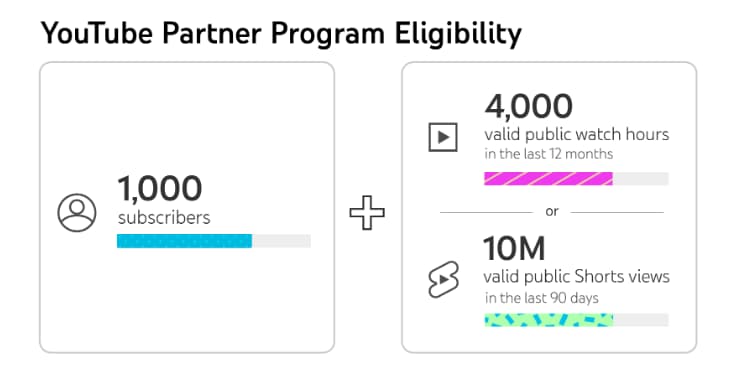
That means you won’t be able to start running ads as soon as you start on YouTube — you’ll need to start posting and building an audience first. In the Earn section of the YouTube Studio, you can choose to be notified when your YouTube account is eligible for the Partner Program.
In addition, YouTube Partners need to abide by some rules:
- Adhere to YouTube’s channel monetization policies, which dictates rules your content will have to follow to qualify for Google AdSense revenue
- Have no Community Guidelines strikes on your channel
- Use 2-step verification to secure your account
- Have an active and linked Google AdSense account
- Live in a country where the YouTube Partner Program is available
Whichever route you take, you'll be eligible to monetize YouTube Shorts content and regular long-form content once you've joined the Partner Program.
How to Make Money with Ads on YouTube
Once your account qualifies for the YouTube Partner Program, you can start running ads on your videos. Turning on AdSense is an excellent way to earn passive income off of the content you’ve already created. Let’s dive into how it works.
How Ad Payments Work on YouTube
When an advertiser pays for an ad on YouTube, they pay for each click and impression. YouTube takes 45% of the revenue for itself, and passes the other 55% to the content creator.
Each ad view costs between $0.10 and $0.30, depending on several factors.
According to Yahoo Finance, the average YouTuber makes $0.18 per view. That works out to $18 per 1,000 views. And the average payout from YouTube in the US in 2022 was $1,154 per week.
The term advertisers use is CPM, which means Cost Per Mille, and refers to the cost per 1,000 impressions.
That makes YouTube ad revenue largely a numbers game — the more views, the more revenue. But there are several factors that influence exactly how much a YouTube creator earns from ads.
Related Article: How Much Does TikTok Pay Creators?
What Influences How Much Money You Can Make on YouTube from Ads
Let’s dig into what factors can affect how much money a YouTube creator makes from ads.
Number of Views
This is the number one metric that impacts how much a YouTube Partner makes from ads. This is your incentive to figure out the YouTube algorithm, grow your YouTube channel, get more subscribers, and create more content. Simply put, the more people watch your content, the more revenue you can make from YouTube ads.
Content Type
The cost for advertisers to place ads on YouTube varies by the keywords they are targeting. The more competitive a keyword or industry is, the more advertisers pay for impressions, and the more revenue a creator can make.
Ads for personal finance products, for example, are more expensive to place on YouTube, as are ads for alcohol. More niche industries like B2B services or science and technology are less expensive.
That means your content can dictate how much ad revenue you make. Below, we’ll look at a case study for a personal finance vlogger who attracts high-paying advertisers.
Rule Breaking
With Google in control, they can demonetize specific videos or your entire YouTube channel at any time if you don’t follow their guidelines.
The following actions can stop you from earning ad revenue:
- Posting videos with profanity
- Posting videos with explicit sexual content
- Marking a video as safe for kids when it’s not
- Using copyright music or video
- Anything deemed offensive or harmful
It’s important to closely follow YouTube’s Community Guidelines and monetization rules in order to not have your content be demonetized.
Other Ways to Make Money from YouTube Videos
Ads can bring in significant revenue on YouTube, but it’s not the only way for creators to make money on the platform. Let’s look at some other methods, including sponsorships, merch, affiliate links, and memberships.
Sponsored Content
Unlike the YouTube Partner Program, you can start creating sponsored content anytime.
Sponsored content is when a brand pays a creator to feature them in a video. That could look like the creator talking about the brand or showcasing or reviewing a product. You’ve probably seen this before when a creator says “today’s video is sponsored by…” and talks for a minute or two about the brand.
These deals are struck privately between the creator and the brand, sometimes with the use of an influencer marketing agency.
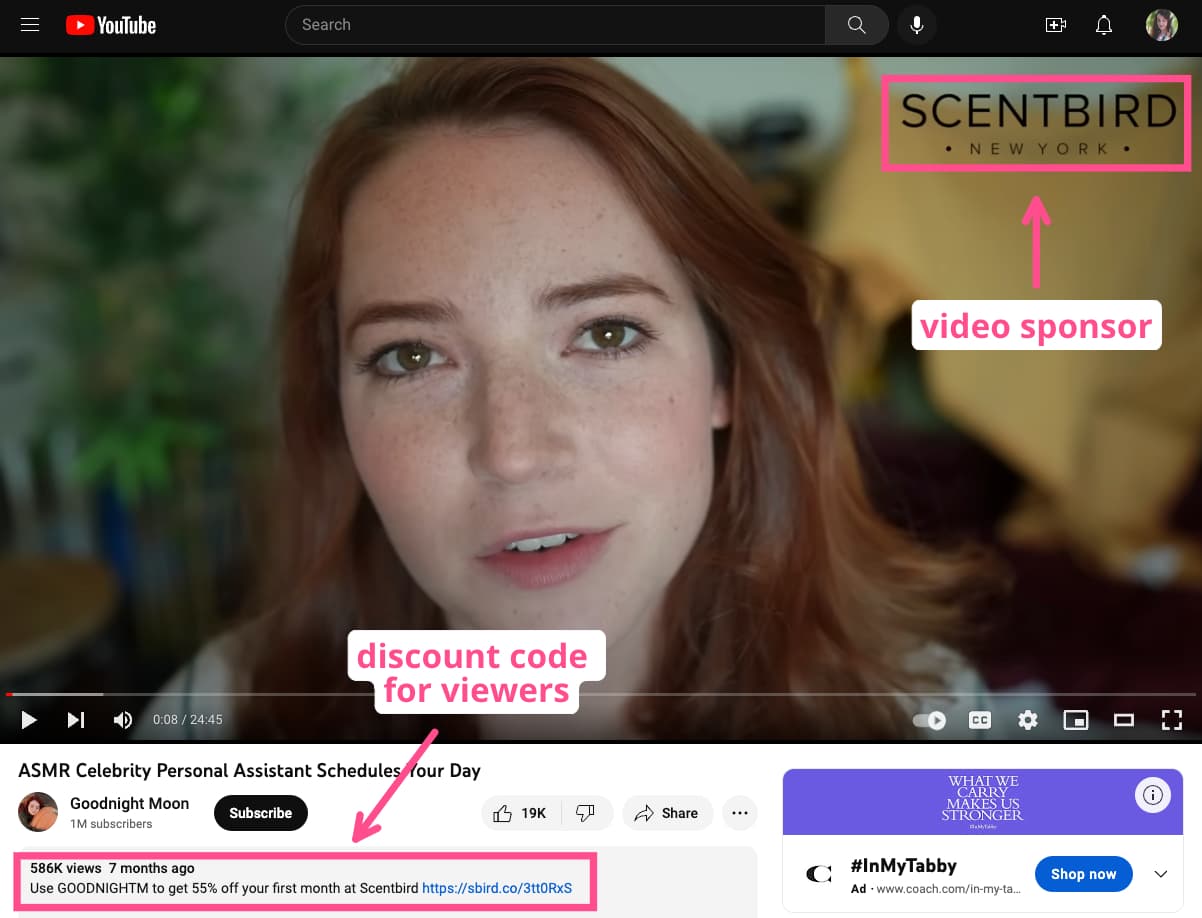
For example, this YouTube video from ASMR creator Goodnight Moon is sponsored by Scentbird. The creator begins the video by announcing the sponsorship and spending two minutes talking about the brand. She also offers a discount code exclusive to her fans.
This is a great opportunity, even for smaller creators. Even small audiences may be highly engaged, making small creators an attractive option for brands.
Fan Merch
Another way to make revenue as a YouTube creator is to create merchandise. That could look like selling t-shirts, stickers, or other goods branded with your YouTube channel assets.
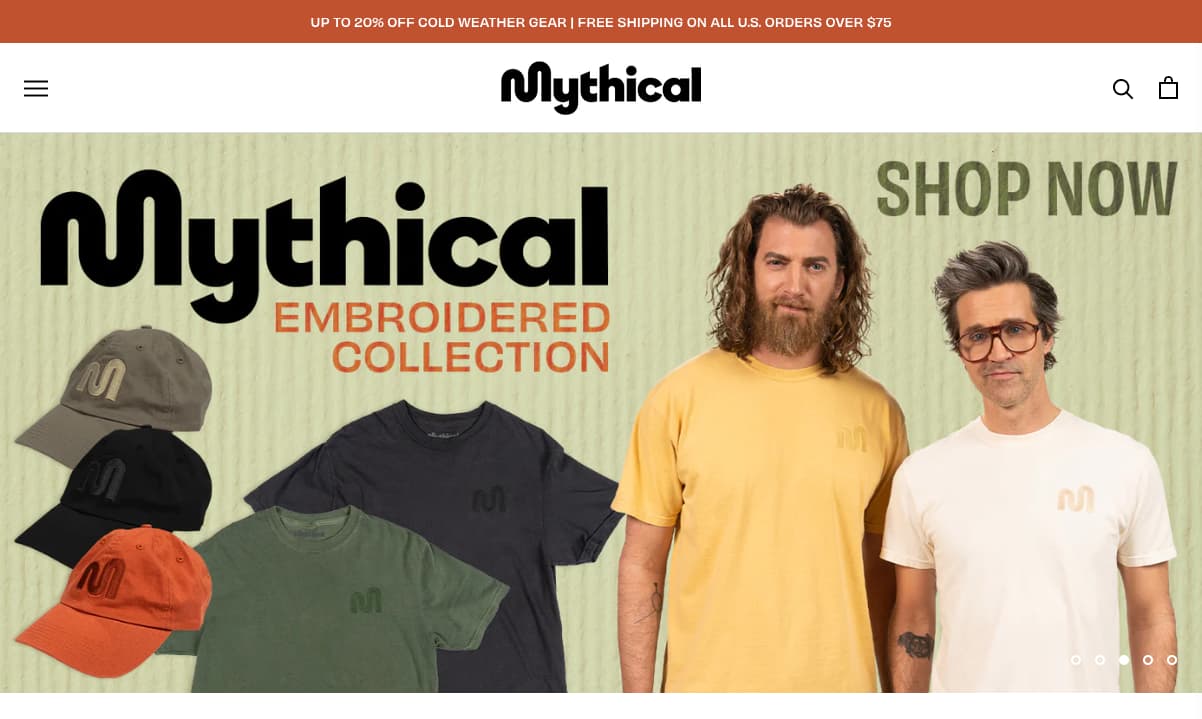
Good Mythical Morning, for example, runs the Mythical store. Here, fans can purchase apparel, drinkware, stickers, and other goods. Fans purchase these products as a way to support the YouTube channel and participate in the channel’s community.
Creating merchandise can be a complex process, including sourcing the goods and having them shipped. Using a service like print-on-demand is an easier way to create and sell apparel, and a good place to start if you want to start selling merch.
You’ll need an e-commerce site, using a platform like Shopify or BigCommerce, to start selling merch.
Affiliate Sales
Affiliate marketing is another way to earn revenue from your YouTube videos.
This works by providing a customized link to an online product to your viewers. If a viewer clicks the link and purchases the product, you get a small commission.
For example, you might create a YouTube video reviewing a brand’s new line of clothing. With affiliate links, you can link directly to those products in your video’s description and earn a percentage of each sale made through that link.
Some creators include affiliate links in all videos linking to, for example, their video and lighting equipment.
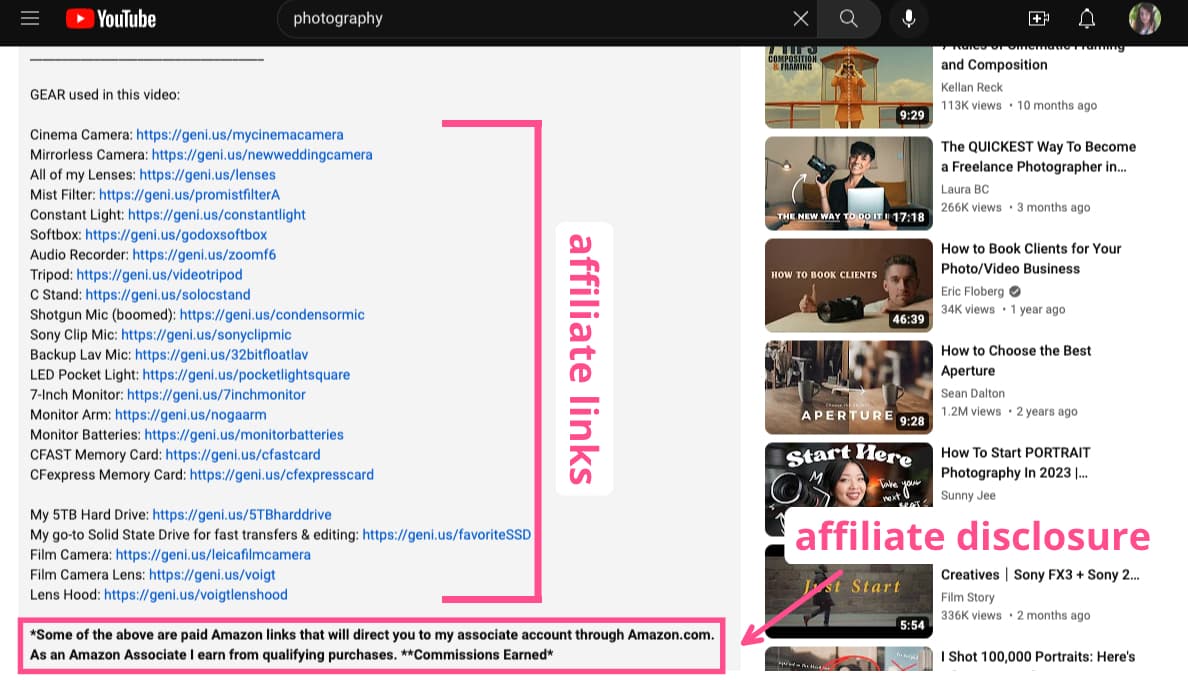
Photographer Eric Floberg links all of his gear in the description of his videos, like in this screenshot above. Beneath the list of links, he discloses his relationship with Amazon as an affiliate, sharing that he earns a commission from purchases made through the links.
The Amazon Affiliate Program is one of the most popular ways to earn money with affiliate sales. You can sign up here.
YouTube Channel Memberships
YouTubers now have the option to create Channel Memberships as another way to make money on YouTube.
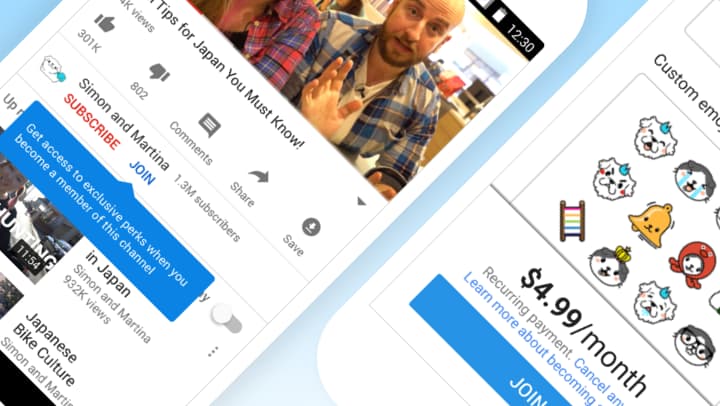
Creators set a monthly membership fee of between $4.99 and $49.99 per month. When a viewer subscribes, you get the monthly fee, minus 30%, which YouTube keeps.
You choose special perks that Channel Members receive as part of their membership, like custom emojis, exclusive merch, live chats, streams, and community posts.
To set up Channel Memberships, you must have 30,000 followers, or 1,000 followers if you're a gaming YouTube channel. You must also be a YouTube Partner and abide by all the other rules in place for monetization and Partners.
YouTube Premium
YouTube Premium is a paid subscription for YouTube that removes ads from videos — but that doesn’t mean creators can’t make money from someone with a Premium membership.
Revenue from YouTube Premium subscribers are distributed among creators, so you won’t miss that ad revenue. Revenue from YouTube Premium subscribers watching your content are sent each month, at the same time as Google Adsense revenue.
Super Chat
If you go live on YouTube often, Super Chat is another good way to monetize your YouTube channel.
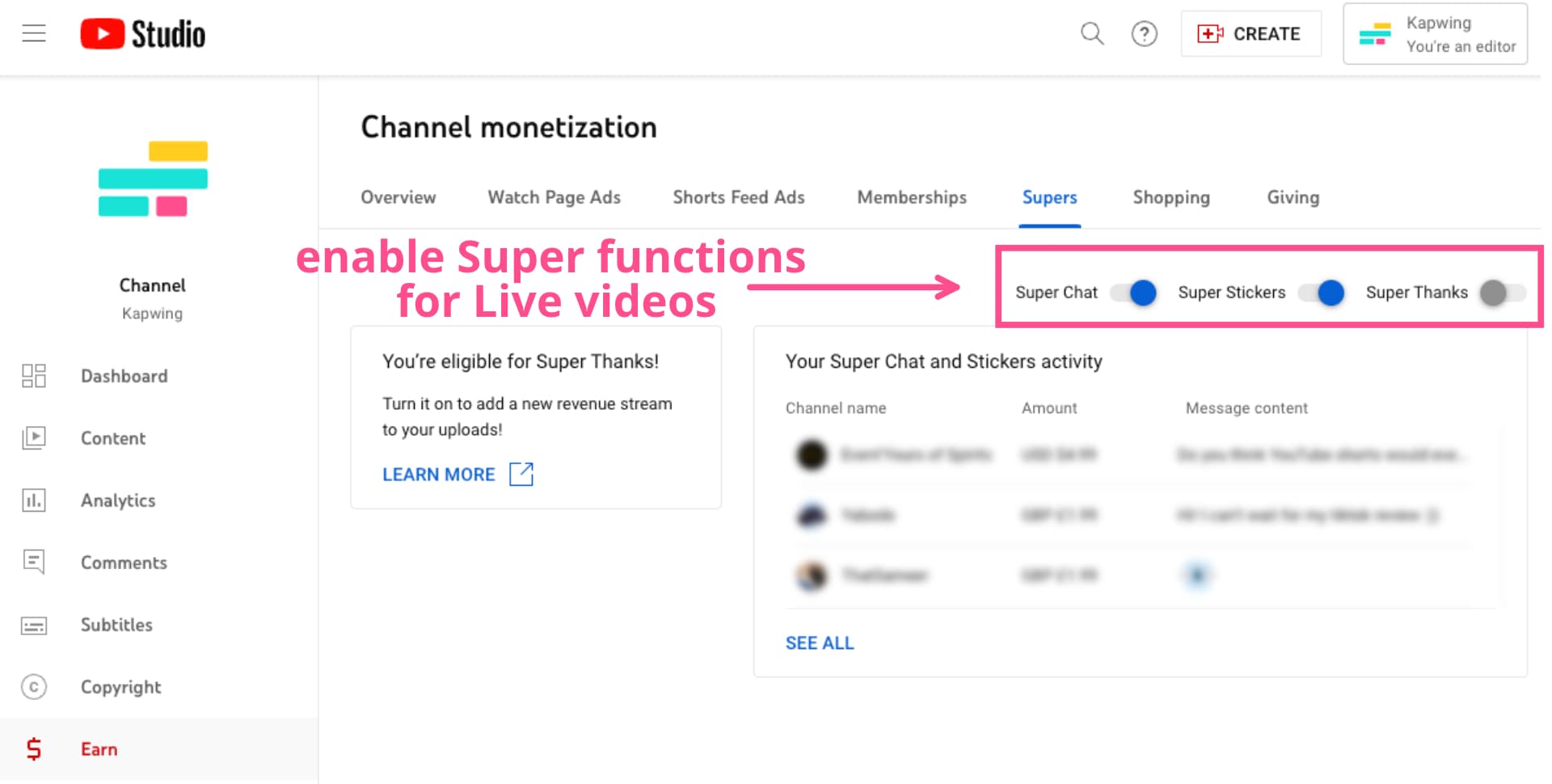
Live videos include a chat box which allows for real-time interaction with viewers. When you enable Super Chat, users can pay for particular interactions, like pinning a chat message or triggering an emoji. Creators then get a cut of that revenue.
Only YouTube Partners can use this feature.
How Much Money Can You Earn on YouTube?
While this statistic varies across categories, the average number of views per video on YouTube falls between 2.3K and 10k. With an average CPM of $18, that means on the conservative end the average YouTuber is making about $41 per video. Before you get discouraged by that number, remember that ad revenue isn’t the whole story for monetizing YouTube videos.
Plus, there’s a way to move the needle on how much you make per view from ads. Let’s look at a successful YouTuber’s earnings and how he’s optimized his income from his channel.
Case Study: How Much a Personal Finance Vlogger Makes on YouTube
Graham Stephan is a real estate agent and investor whose YouTube channel covers personal finance and economic content. In 2022, he released a video diving into exactly how he makes money on YouTube.
At the time, he had 3 million subscribers (he now has more than 4.2 million). He shared that on one video about Apple credit cards with nearly 1.5 million views, he earned just over $15,000. However, another video of his with the same number of views had earned double that.
This is because every topic attracts different advertisers with different budgets. Personal finance happens to attract high-paying advertisers.
Even if your channel isn’t a personal finance channel, it’s worth investigating areas where your niche overlaps with personal finance for some high earning videos. A good example would be a travel channel publishing a video about the best credit cards for travel perks or how to save money for your next trip.
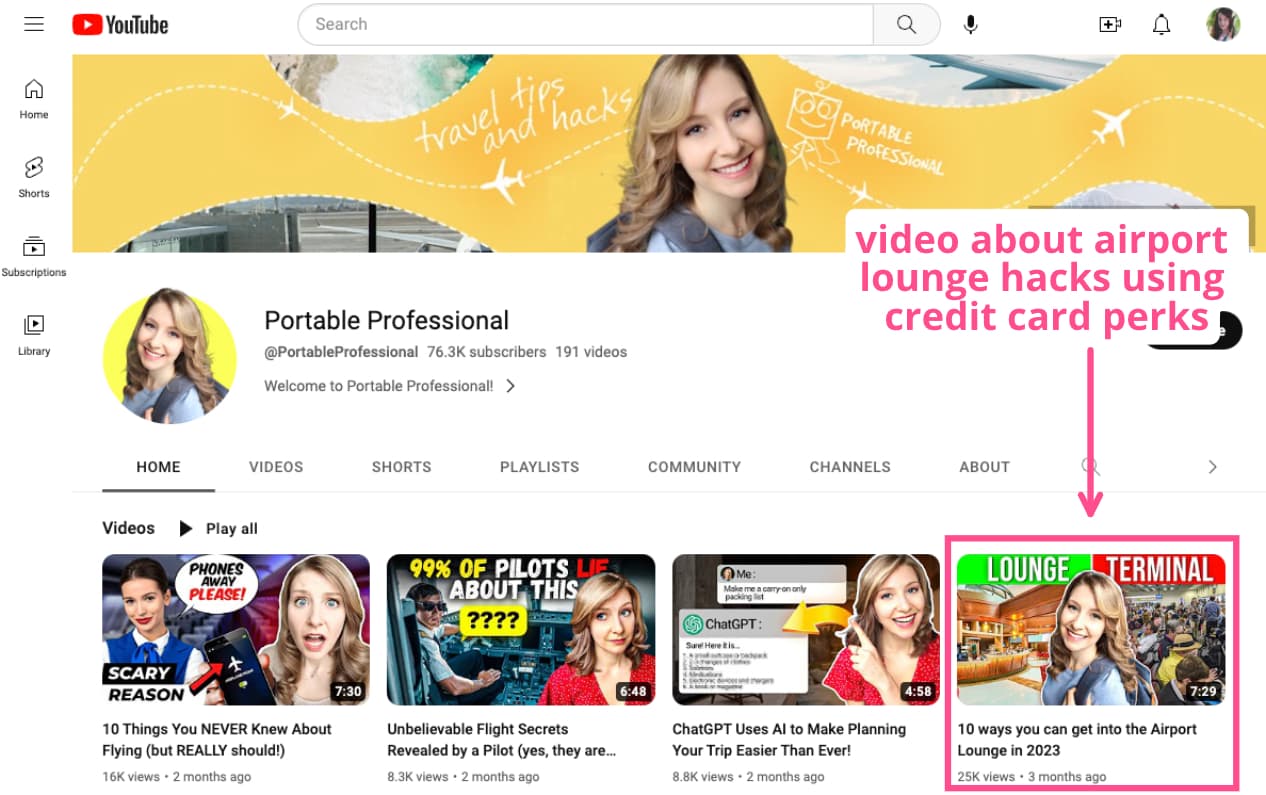
Take this video from Portable Professional, for example. She's a YouTuber that mostly focuses on travel tips and hacks. This video, though, on how to get into airport lounges, zeroes in on the intersection of travel tips and personal finance tips: travel credit card perks.
The results: more than double her average video views. Couple that with the ad placement from American Express that plays at the beginning of the video and you've got a very lucrative video for her channel.
These hyper-specific videos are the sweet spot, according to Graham Stephan. He says the more niche and specific your content is to a particular subject, the better advertisers are able to target your channel for ads. The reverse is true for broader, more generalized topics. YouTube creators who just create more generic comedy content might actually earn less per view for ads.
He also talked about sponsored videos. He notes the pay for sponsored content can vary widely, depending on everything from your subscriber numbers to your negotiating skills. He says sponsored content ranges from $10 to $120 per 1,000 views.
Graham also notes that he saw the biggest jump in earnings as he improved the quality of his content and fine-tuned the topics in his videos.
How Much Can Brands Earn By Monetizing Their YouTube Channels?
When you think about who’s making money on YouTube, the classic YouTuber probably comes to mind. Someone like Graham Stephan, from our previous case study. A charismatic individual whose expertise, entertainment value, or both keeps viewers coming back to their channel. But brands can (and should!) be making money on YouTube, too.
And since we don’t believe in gatekeeping, here’s how Kapwing does it.
Case Study: How Kapwing Makes Money on YouTube
As a video software company, Kapwing has always had a vested interest in producing great video content. But having a solid YouTube presence has advantages beyond being an awareness and acquisition channel. For brands like ours already creating video content, YouTube is an attractive additional revenue stream.
Let’s look at the hard numbers: In 2022, Kapwing’s YouTube channel earned just over $69,100. In 2021, it earned $95,300.
For context, as of March 2023, Kapwing had 182,000 subscribers and had posted 565 videos.
Jack Dodge is the face of (and brains behind) Kapwing’s YouTube videos. He says that brands like Kapwing have fewer opportunities for revenue because it would be strange and jarring to do sponsored content with another brand. With those limitations, ad revenue is the primary way to make money on YouTube for Kapwing. Having a healthy mix of content helps support that.
Jack’s strategy has been to provide educational content, like the video below, in addition to content about Kapwing. This approach attracts more viewers and targeted keywords for advertisers.
“One of the hardest things about being a brand on social is getting people to not think of you as a brand. You want them to come back to your channel over and over again, because of the knowledge or teaching or because they like your personality,” he says.
Kapwing’s content attracts advertisers for other software products, which provides a decent cost per view. On Kapwing’s YouTube videos, viewers might see ads for Notion, for example.
Jack says that for brands, YouTube can be a marketing channel in addition to a viable revenue option. Kapwing’s YouTube revenue justifies a full-time employee to create content, especially coupled with the fact that Kapwing’s YouTube channel drives visits to Kapwing’s website, where users sign up for the product.
“Overall, it's clear that YouTube can really be a revenue driver,” says Jack.
Make money on YouTube by diversifying your revenue
At the end of the day, the most important factor influencing how much money you can make on YouTube is the quality of your content. High-quality videos will attract views and subscribers, which will increase your earning potential.
Although ads can be incredibly profitable, diversifying your revenue with sponsorships, affiliate links, or merch will add to your earnings and keep money flowing even if your videos are demonetized.
Making money on YouTube can happen in many ways, and you should take advantage of all of them.
FAQs: How to Make Money on YouTube
1. How many views do you need on YouTube to make money?
Once you're a YouTube Partner, every view on a video with an ad can make money. Creators earn a percentage of the ad cost for each view.
2. How many views do you need on YouTube to make $1000 a month?
YouTube creators earn, on average, $0.18 per view from Google Adsense. That means it would take 5,555 views to earn $1,000. However, the amount earned per view can vary, so it may take more or less time depending on which ads are running on your YouTube videos.
3. How do beginner YouTubers make money?
Before qualifying for the YouTube Partner Program, beginner YouTube creators can make money through sponsored content, affiliate sales, or merchandise.
4. How do YouTubers get paid?
YouTube creators are paid monthly by the Google Adsense program. For earnings from sponsored content, affiliate sales, and merch sales, the payment method will vary depending on the program or brand you’re working with.
Related Articles:
- How to Monetize Instagram Reels (Tips and Examples)
- How to Translate YouTube Videos for Free
- How to Make a GIF from a YouTube Video (For Free)

